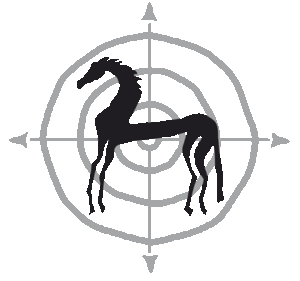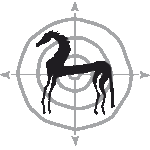Is your farrier psychic…?
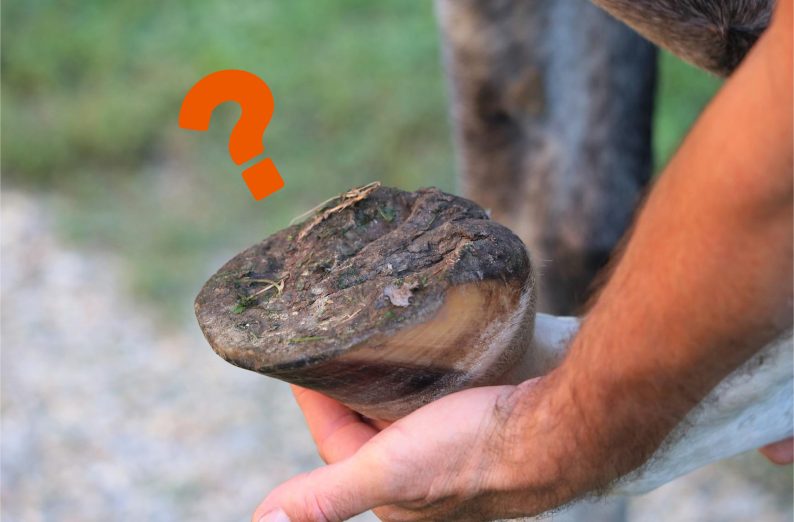
How would you like a job that is often dangerous? And very hard on your body? On top of that unpredictable, and needing a lot of knowledge, technical skills and physical strength?
Horse hooves need maintenance.
Doing hoof maintenance for a living – as a farrier or a barefoot hoof trimmer – is one of the toughest jobs in the horse world.
Read on to see how you can help them do the best possible job for your horse. And there is even a great offer at the end of this post!!
The best thing for your horse
There are quite a few things a horse owner can do to make hoof work easier (find out more about that here).
Many of them are obvious. Such as: training your horse to stand still. Making sure he lifts his feet nicely. Arranging for a decent place to work – with good light and a flat, clean surface.
But there is another thing to think about besides those practical issues.
One of the best things you can do for your horse is to COMMUNICATE with your hoof care specialist. Even if you cannot be there for the appointment (you can text, or phone).
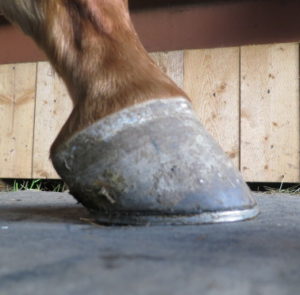
Hooves grow slowly – it can take many months before problems become visible
Horse hooves grow slowly – about 1 centimeter per month. So if there is any change (good or bad) in the way they are trimmed or shod, it might take months before the effects become visible.
Sometimes there can also be very quick effects: the horse moves better after the appointment – or he is suddenly lame.
Or maybe you don’t notice anything at first – but then over the next few weeks you notice changes. In the way he moves, for example.
If you want to keep your horse healthy and happy, it is important to keep your eyes open for such changes. And even more important: to share them with the person who is responsible for hoof care.
Not a psychic
Just one example why this is so important. Suppose your horse ‘always’ moves a bit short and choppy the first few days after a hoof trim or a shoeing. But then gradually, he moves better again. And by the time the next appointment comes, he is totally fine.
There is a good chance that a little change in the way the horse is trimmed or shod could make him more comfortable all the time.
But how will your hoof care specialist know to make that change – if YOU don’t tell her or him about the problem in the first place?
After all, by the next time they see the horse, it’s moving fine again!
And most likely your hoof care specialist is not a psychic, a clairvoyant or telepathic 😉 .

Your hoof care specialist can ‘read’ hooves – but not your mind!
‘Reading’ the hoof
Experienced hoof trimmers and farriers are very good at ‘reading’ hooves. They can look at them and ‘see’ what has been going on in your horse’s life the last few months. Just by looking at the growth, the angles, the pattern of wear and tear, any ridges, bumps and holes, and so on.
But there are still lots of useful things you can tell them. Such as:
- How did it go after the last appointment? Were there any changes in the way the horse moved? Longer or shorter strides, stumbling more, or moving better?
- Did the horse lose a shoe? If so, how? How long before it was put back on?
- Are there other things going on in your horses life? Will the horse go to pasture soon? Or maybe the opposite: go into full training?
- Have there been other things, like back problems or training issues – stopping while jumping? Moving uneven in corners?
- Have you changed to a different food, or a different (hoof) supplement?
- Even things like getting a new co-rider, or moving to a different paddock, can make a difference.
- Very important: what will the horse be doing in the next few days? Is there a big competition or important training coming up soon? Do you plan to take the horse on a riding holiday?
- And, of course, hoof related changes: would you like your horse to go barefoot anytime soon (pasture season, for example)? Do you need shoes with stud holes – and for what kind of studs? Snow soles, maybe?
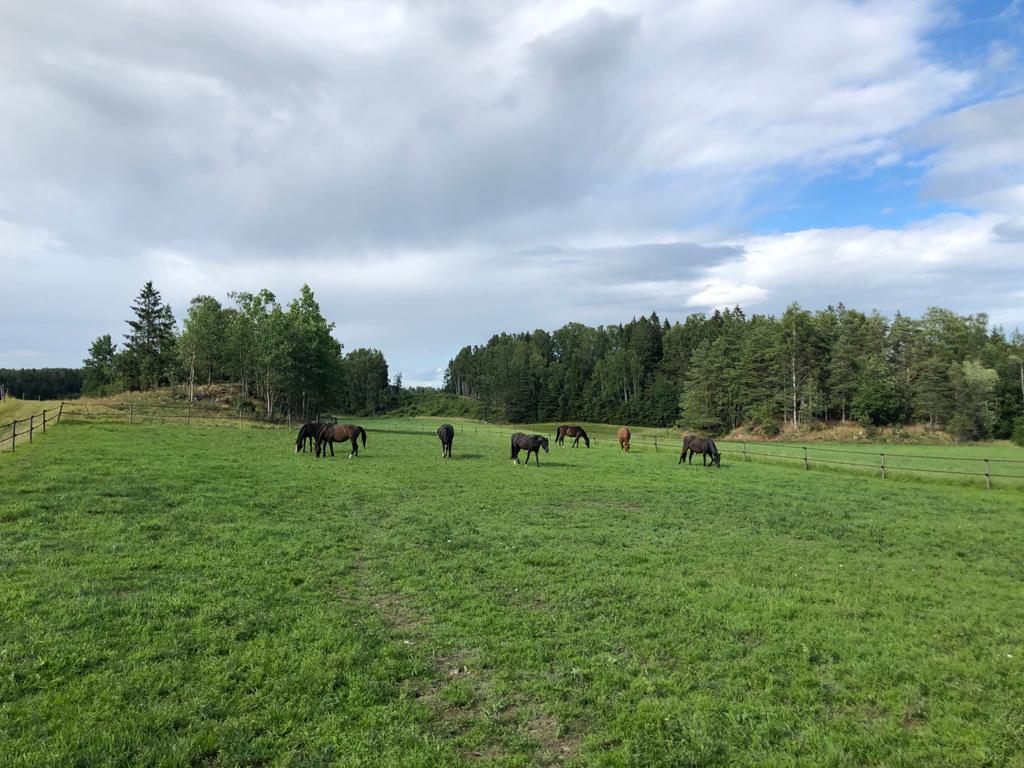
Informer om endringer – skal hesten på sommerbeite, kanskje?
Using a new farrier or hoof trimmer?
Is it a farrier or hoof trimmer that hasn’t worked on your horse before? Then it’s very important to inform them about things like:
- When was the last appointment? (So they can estimate hoof growth, amongst other things.)
- How many months/years has the horse been barefoot/shod?
- What has been the normal time between appointments?
- Has the horse ever had problems like laminitis, tendon injuries, hoof abscesses and so on?
Planning is key!
Clearly a lot of things can influence hoof health. And you can help your hoof care professional by communicating clearly about what is working, and what not.
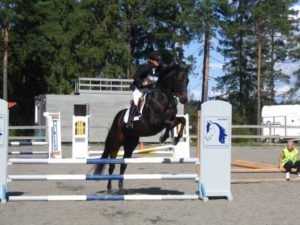
Planning hoof care is an important part of competition planning!
Another important aspect is planning.
Farriers are busy people.
Good farriers are very busy people!
But your horse not only has to fit into their calendar – the hoof care schedule also has to fit your horse, and your riding calendar.
Maybe there’s a ‘big thing’ coming up where you want your horse to look and perform his best. It’s always a good idea to schedule hoof care at least a few days beforehand – optimally a week or two before. Just to make sure there are no last-minute reactions or surprises.
And think a bit about your riding plans on the day the farrier has been. Can you do that intensive jumping session, for example? Or is it better to wait a few days?
Bigger issues = more planning
Some hooves need bigger adjustments. For example, a horse that quickly gets very high heels. Or very long toes. Then it’s even more important to plan your hoof care appointments carefully.
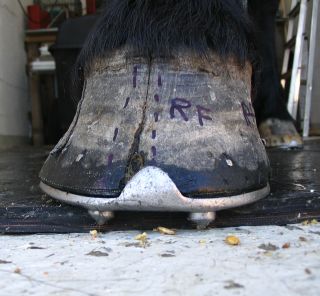
Bigger hoof issues need even more careful hoof care planning…
For example: in a horse that grows very high heels between each shoeing, the hooves have to be adjusted at every appointment (otherwise they will get far too high very quickly). Such an adjustment does not only affect the hooves. But also everything on top of the hooves: legs, shoulders, back, and so on.
Barefoot horses have a nice advantage here, by the way.
Since there is no shoe, the hoof will wear down a bit more by itself. Meaning that the adjustments often can be smaller. And therefore less of a strain.
Sometimes hooves need very frequent adjustments. For example, when trying to ‘fix’ a crooked leg. Or in a horse with very ‘underslung hooves/underrun heels’. This can be really hard to do when the horse has shoes; you cannot take off the shoes every week just to do a small adjustment. Because then there will be too many nail holes after a while.
Therefore, frequent small and gentle adjustments are easiest to do in a barefoot horse.
Planning tip & Discount Coupon!
Barefoot or shoes – whatever you choose, planning is an essential part of keeping your horse healthy and happy.
Our Professional Horse Journal is a great choice for all horse owners.
It will help you keep track of all important information. And make planning your hoof care a lot easier. Even better….
All HorseCompass blog post readers will get 50% off with the promo code: HOOVES
Click on the button to order your journal – and remember to use the coupon!
